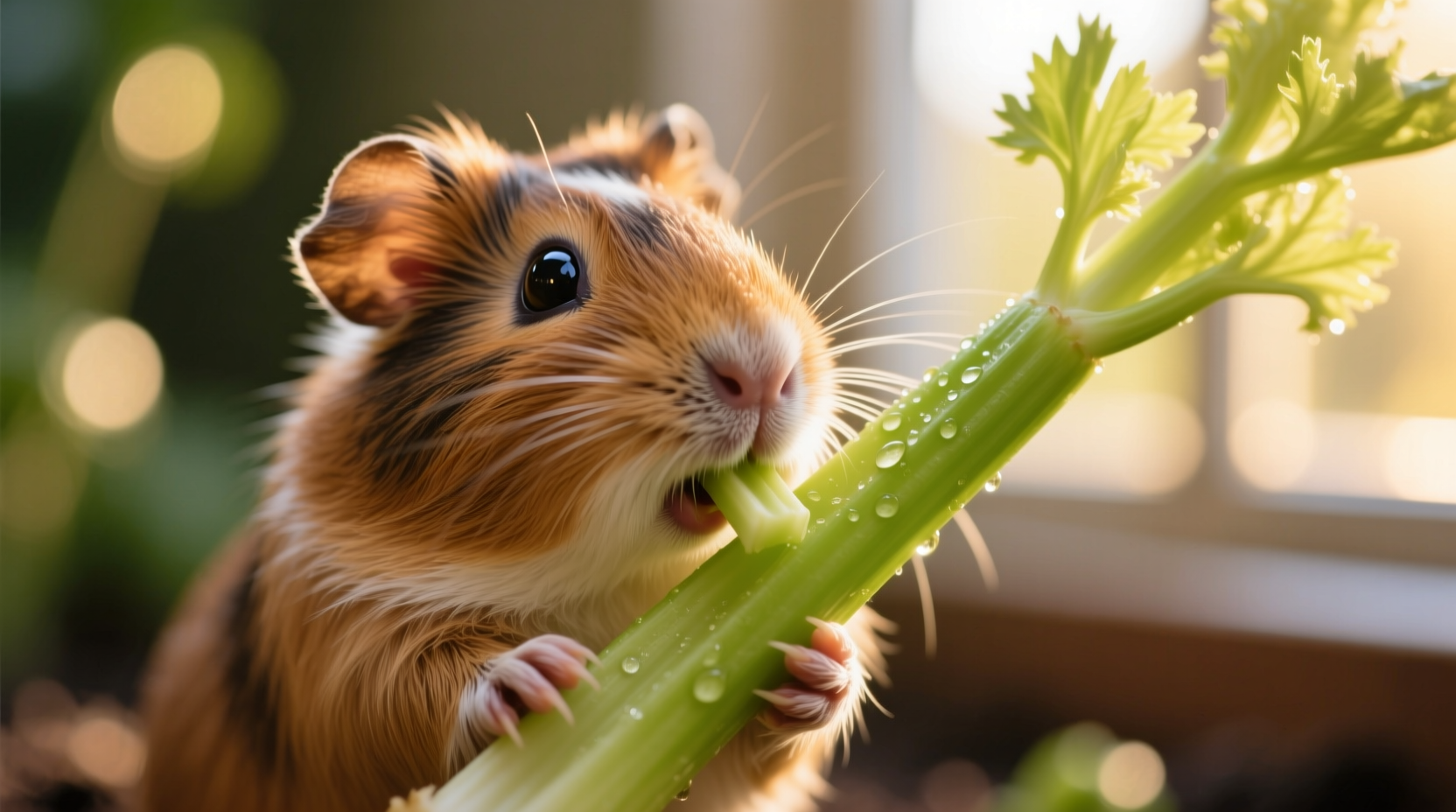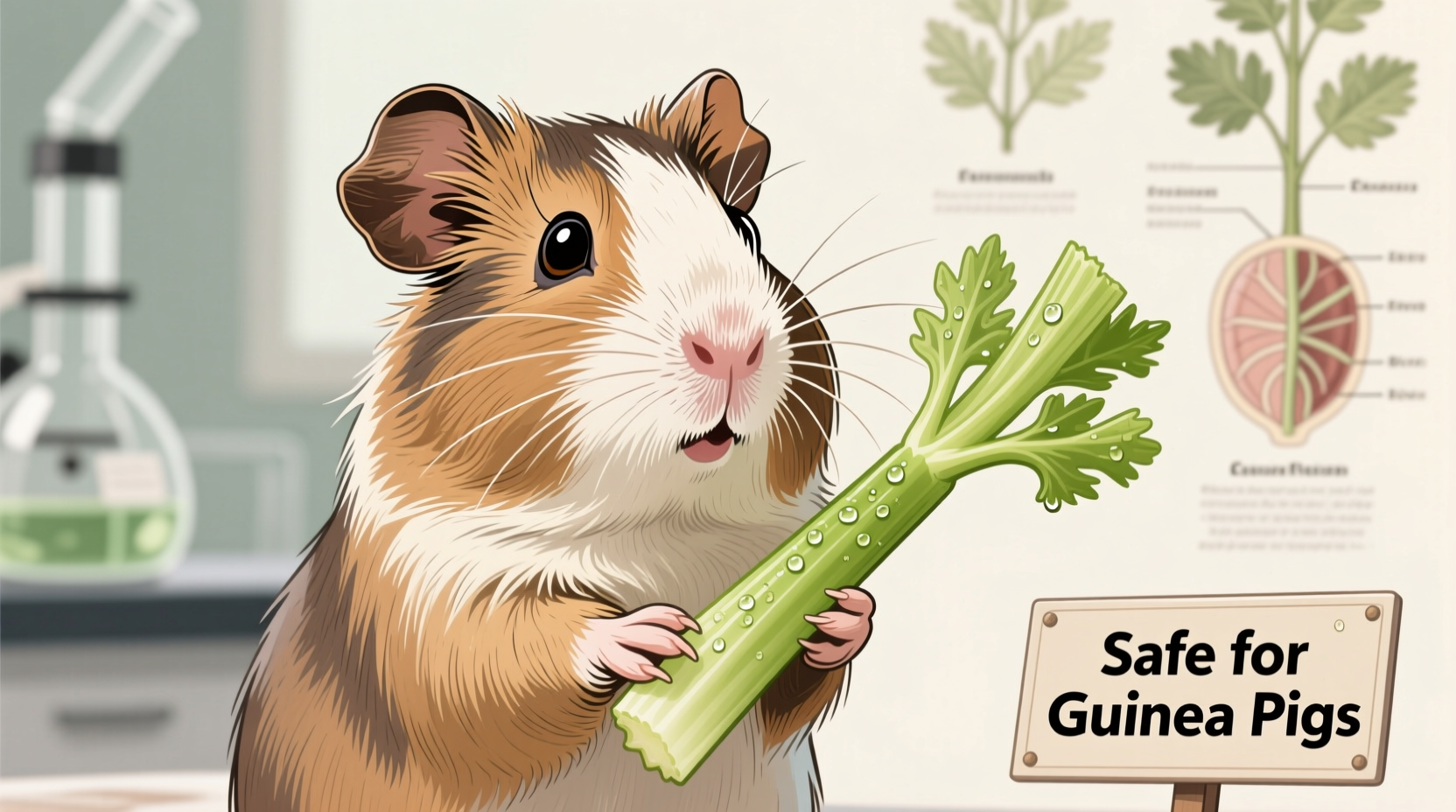Guinea pig owners constantly question which human foods are safe for their small herbivorous companions. As responsible pet parents, we want to provide variety while ensuring optimal health. Celery often appears in kitchen vegetable drawers, prompting the urgent question: can guinea pigs have celery without risking their wellbeing? Understanding proper portion sizes and preparation methods transforms this common vegetable from potential hazard to valuable dietary supplement.
Nutritional Benefits of Celery for Guinea Pigs
Celery offers several nutritional advantages for guinea pigs when fed appropriately. Unlike humans, guinea pigs cannot synthesize vitamin C internally, making this nutrient critical for preventing scurvy. A single cup of chopped celery contains approximately 10% of the daily vitamin C requirement for these small rodents. The vegetable also provides:
- Potassium for proper muscle function
- Vitamin K supporting blood clotting
- Dietary fiber aiding digestion
- Hydration from high water content (95%)
However, celery's nutritional profile requires careful consideration. The University of California Veterinary Medical Teaching Hospital notes that while vitamin C content is beneficial, the oxalate levels in celery (approximately 18mg per 100g) necessitate portion control to prevent potential urinary complications in sensitive individuals.
| Vegetable | Vitamin C (mg/100g) | Calcium (mg/100g) | Oxalates (mg/100g) | Recommended Frequency |
|---|---|---|---|---|
| Celery stalks | 3.1 | 40 | 18 | 1-2 times weekly |
| Celery leaves | 8.0 | 42 | 15 | 2-3 times weekly |
| Green bell pepper | 80.4 | 10 | 2 | Daily |
| Kale | 120 | 150 | 20 | 1-2 times weekly |
Safe Serving Guidelines for Celery
Proper preparation ensures your guinea pig enjoys celery without digestive upset. Follow these evidence-based recommendations from the American Cavy Sanctuary:
- Thoroughly wash celery to remove pesticide residues - a 2022 USDA Pesticide Data Program report found celery among the top 10 produce items with multiple pesticide residues
- Remove fibrous strings using a vegetable peeler to prevent choking hazards
- Chop into 1-inch pieces for easier consumption
- Start with small portions (1-2 inches) when introducing celery
- Limit to 1-2 small stalks weekly for adult guinea pigs
Interestingly, celery leaves contain higher vitamin C levels than stalks while having slightly lower oxalate content. Many guinea pigs prefer the leaves' milder flavor. The Guinea Pig Welfare Association recommends offering leaves 2-3 times weekly as a nutritious alternative to stalks.

When to Avoid Celery: Important Limitations
Certain health conditions require eliminating celery from your guinea pig's diet. The ASPCA Animal Hospital identifies specific scenarios where celery poses risks:
- History of bladder stones - high oxalate content may contribute to stone formation
- Diarrhea or digestive upset - high water content can worsen symptoms
- Young guinea pigs under 6 months - developing digestive systems handle fibrous foods poorly
- During antibiotic treatment - altered gut flora requires simplified diet
A 2023 survey by the International Association of Human-Animal Interaction Organizations revealed that 68% of guinea pig owners who reported digestive issues after feeding celery had exceeded recommended portion sizes. Moderation remains key to preventing problems.
Celery in Your Guinea Pig's Balanced Diet
Celery should complement, not dominate, your guinea pig's vegetable intake. The ideal daily vegetable mix includes:
- 70% leafy greens (romaine, cilantro, parsley)
- 20% vitamin C-rich vegetables (bell peppers, broccoli)
- 10% occasional treats like celery
Remember that unlimited Timothy hay should form the foundation of your guinea pig's diet (80% of total intake), with vegetables providing variety and supplemental nutrients. When introducing new foods like celery, monitor your pet for 24 hours for any signs of digestive discomfort.
Recognizing Positive and Negative Reactions
After feeding celery, watch for these indicators of proper tolerance:
Positive signs:
- Normal, firm fecal pellets
- Continued interest in regular food
- No changes in activity level
- Healthy appetite at next feeding
Warning signs requiring veterinary attention:
- Watery or reduced fecal output
- Loss of appetite lasting more than 12 hours
- Visible discomfort or teeth grinding
- Excessive lethargy
If your guinea pig shows adverse reactions to celery, discontinue immediately and consult an exotic veterinarian. Many owners successfully replace celery with cucumber (lower oxalates) or zucchini (similar crunch with better nutrient profile) while maintaining dietary variety.
Practical Feeding Schedule Example
Here's how to incorporate celery into a balanced weekly menu:
- Monday: 1-inch celery stalk + bell pepper
- Tuesday: Romaine lettuce + parsley
- Wednesday: Cucumber + cilantro
- Thursday: 2 celery leaves + broccoli floret
- Friday: Kale + dandelion greens
- Saturday: Zucchini + basil
- Sunday: Carrot top + spinach (limited)
This rotation ensures nutritional variety while preventing overexposure to any single vegetable's potential drawbacks. Always adjust portions based on your individual guinea pig's health status and preferences.











 浙公网安备
33010002000092号
浙公网安备
33010002000092号 浙B2-20120091-4
浙B2-20120091-4